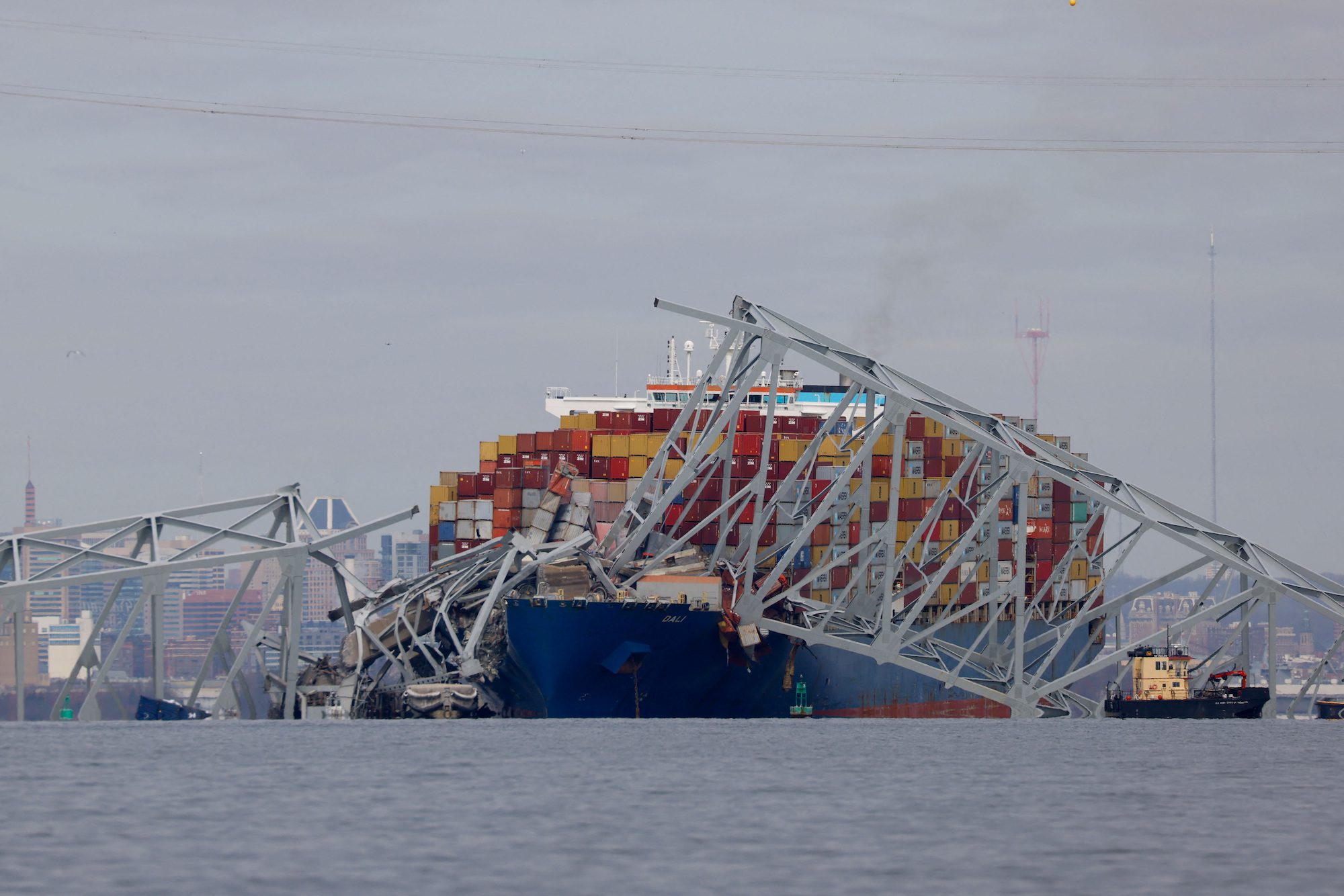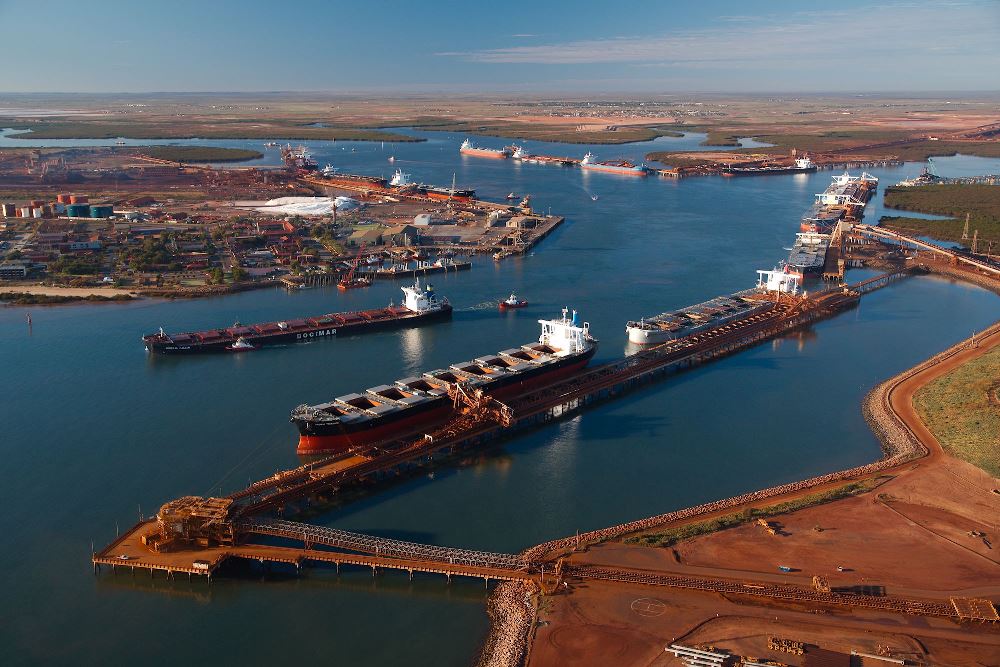By gCaptain Staff –
Newly released transcripts from the National Transportation Safety Board (NTSB) are offering a chilling, moment-by-moment look inside the bridge of the Dali containership in the lead-up to the March 26, 2024 disaster that brought down Baltimore’s Francis Scott Key Bridge, killing six construction workers and severing a vital artery in the Port of Baltimore.
The transcripts, drawn from the vessel’s Voyage Data Recorder (VDR), span from the afternoon of March 25 through the collision and immediate aftermath. They reveal an escalating series of technical problems aboard the Singapore-flagged vessel in the hours before departure—problems that went largely unmentioned during the pilot exchange and preparations for sailing.
Alarms Before Departure
Beginning at 14:20 EDT on March 25, the VDR picked up numerous alarms on the bridge, many of them linked to the ship’s power management systems. Sounds consistent with automatic power changeover circuits and multiple loud electronic alerts persisted throughout the afternoon.
At one point, so many alarms were sounding that bridge conversations over UHF radio were unintelligible. Between 14:35 and 14:57, alarms again blared continuously—yet, notably, no voices were recorded on the bridge.
By 15:30, the Chief Officer informed the Master that the alarms were “nominal,” though no specifics were given. The crew reported that all alarms had been reset by 15:57.
Then, at 17:49, the Master placed a significant call to the Chief Engineer, instructing him—speaking in Tamil—to prepare an incident report tied to the engine room. The Master stressed the importance of filling out the form completely and accurately, suggesting that whatever had occurred warranted documentation. The exact nature of the incident remains unclear, and no further references were made on the VDR.
Departure and Casual Exchanges
Around midnight, the Dali began departure preparations. Pilots boarded the vessel at approximately 00:05, and standard checks were conducted: draft verification, engine blow-through, tug arrangements, and telegraph tests. Two tugs, the Eric McAllister and Bridget McAllister, were positioned forward and aft respectively.
At 00:16:02, the pilot asked the Master, “Captain, everything’s working?” to which the Master replied, “Yeah, everything is in order.” That reassurance came despite the earlier alarms and incident report request just hours before.
As the vessel prepared to sail, bridge conversations remained casual—even lighthearted. At 00:34:26, the Pilot told the Training Pilot that the voyage was “pretty straightforward” and remarked that the Portable Pilot Unit (PPU) “really makes it a lot easier,” especially for wider ships.
Power Loss and Collision
By 01:25, the situation deteriorated rapidly. The Second Officer attempted to call the engine room, but received no response. At 01:28:16, he reported a critical loss: “We do not have bow thruster.” These moments coincide with the first of two total blackouts detailed in the NTSB’s preliminary report released in May 2024.
Just 0.6 miles from the Key Bridge, the Dali lost electrical power, halting its main propulsion and disabling steering systems. A second blackout occurred moments later, as the vessel drifted toward the bridge at over 6 knots.
At 01:26:01, the pilot told the AMP Pilot Command Center to “have them shut down the [Key] Bridge. I just lost steering.”
Shortly after 01:27:00, the pilots issued calls for tug assistance and to drop anchor, and the bridge was ordered closed to traffic. Tragically, six road workers remained on the span. The Dali struck the bridge’s pier 17 at 01:29:10, collapsing six bridge spans.
The Training Pilot radioed the Coast Guard at 01:29:37, stating, “Coast Guard. Coast Guard. This is Dali. We have a major problem. The Key Bridge is down. I repeat, the Key Bridge is down.”
Chaos and Confirmation
The post-collision recording captures confusion on the bridge amid blaring alarms in the minutes that followed. The Coast Guard inquired about the vessel’s position; the Pilot responded that they were “under the Francis Scott Key Bridge.” The Training Pilot confirmed the worst: “The bridge is down.”
The crew and pilots discussed the potential for casualties on the bridge and damage to the vessel. At one point, the Master was heard stating over the phone that water was running into the vessel and containers had broken loose, but that there was “no oil sheen” visible.
The final alarm ceased at 02:25 a.m.
A Tragedy of Warnings Unheeded?
The full investigation is ongoing, but these transcripts—combined with earlier NTSB findings—suggest a troubling chain of technical issues and potentially missed warning signs.
The Dali had experienced two in-port blackouts the day before departure, both related to human error and fuel pressure issues. After switching electrical bus configurations, the ship departed using the same breakers that would later trip during its fateful voyage.
Fuel quality was ruled out, but the question remains: Why weren’t the known issues disclosed during the master/pilot exchange? And did the crew fully grasp the significance of the earlier alarms?
Considering the outcome, the NTSB transcripts offer painful clarity: what began as a seemingly routine departure became one of the most devastating maritime accidents in recent U.S. history.
The ful VDR transcript and NTSB’s preliminary report are available online.

 Join The Club
Join The Club











